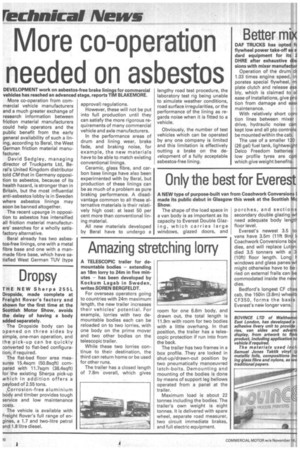More co-operation needed on asbestos
Page 10

If you've noticed an error in this article please click here to report it so we can fix it.
DEVELOPMENT work on asbestos-free brake linings for commercial vehicles has reached an advanced stage, reports TIM BLAKEMORE.
More co-operation from commercial vehicle manufacturers and a much greater exchange of research information between friction material manufacturers could help operators and the public benefit from the early general availability of such a lining, according to Beral, the West German friction material manufacturer, David Sedgley, managing director of Truckparts Ltd, Beral's United Kingdom distributor told CMthat in Germany opposition to asbestos, because of its health hazard, is stronger than in Britain, but the most influential anti-asbestos lobby is in Sweden where asbestos linings may soon be banned altogether.
The recent upsurge in opposition to asbestos has intensified all friction material manufacturers' searches for a wholly satisfactory alternative.
Beral already has two asbes tos-free linings, one with a metal fibre base and one with a manmade fibre base, which have satisfied West German TUV (type approval) regulations.
However, these will not be put into full production until they can satisfy the more rigorous requirements of many commercial vehicle and axle manufacturers.
In the performance areas of drum and lining wear, brake fade, and braking noise, for example, the new materials have to be able to match existing conventional linings.
Ceramic, glass fibre, and carbon base linings have also been experimented with by Beral, but production of these linings can be as much of a problem as pure braking performance. A disadvantage common to all these alternative materials is their relatively high cost: at least 50 per cent more than conventional lining material.
All new materials developed by Beral have to undergo a lengthy road test procedure, the laboratory test rig being unable to simulate weather conditions, road surface irregularities, or the performance of the lining as regards noise when it is fitted to a vehicle.
Obviously, the number of test vehicles which can be operated by any one company is limited and this limitation is effectively cutting a brake on the development of a fully acceptable asbestos-free lining.






















































































